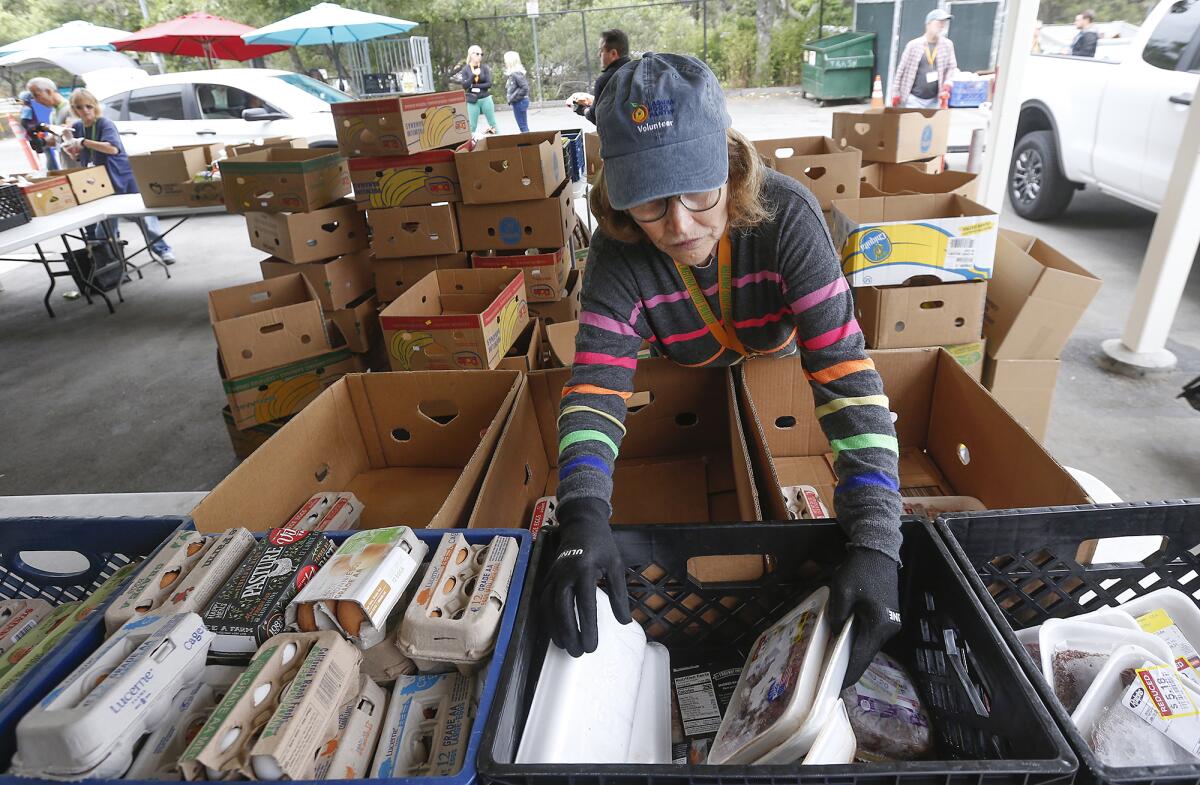Study finds a third of Orange County residents struggle to make ends meet

- Share via
The income of about one-third of Orange County households falls short of what they need to afford food, housing, healthcare, childcare, transportation and other basic needs, according to a study released Wednesday by United Way.
The earnings of over 79,000 out of an estimated 924,100 households in Orange County, roughly 9%, are below the federal poverty line, according to the report. That figure represents those who might not be able to afford enough food to survive from month to month. It does not factor in other expenses like rent, daycare or costs associated with having a car.
The average cost of all of those things put together is more than what as many as 302,844 households in the county bring in, according to United Way.
The nonprofit agency’s report “shows that many more California working families struggle to meet living costs than official estimates and identifies significant gaps between what it costs for families and their children to live with dignity and what they actually earn,” President and CEO of United Ways of California Peter Manzo said.
About 52% of Orange County households with children younger than 6 don’t earn enough to cover the average cost of basic necessities, the study found. And local Latino families are disproportionately experiencing poverty, with 52% of them receiving incomes below United Way’s “real cost measure.”
Housing remains a burden for many. About 40% of Orange County families spend 30% or more of their income to stay in their homes.
Statewide, 4.3 million households pay almost one-third of their income on housing. Counties with the highest percentage of residents living below United Way’s real cost measure included Marin County with 48%, Imperial County with 44%, Santa Barbara County with 42% and Los Angeles County with 40%.
Those with less education struggle more than others. The heads of about 68% of households making less than the real cost measure did not have a high school diploma. In comparison, only about 18% had at least a bachelor’s degree.
“We’re diving into the data to figure out how we can use the information to inform how our programs will function over the next five years to help Orange County residents achieve financial stability and improve their lives,” said Andrew Fahmy, executive director of Orange County United Way’s United for Financial Security Initiative.
All the latest on Orange County from Orange County.
Get our free TimesOC newsletter.
You may occasionally receive promotional content from the Daily Pilot.






